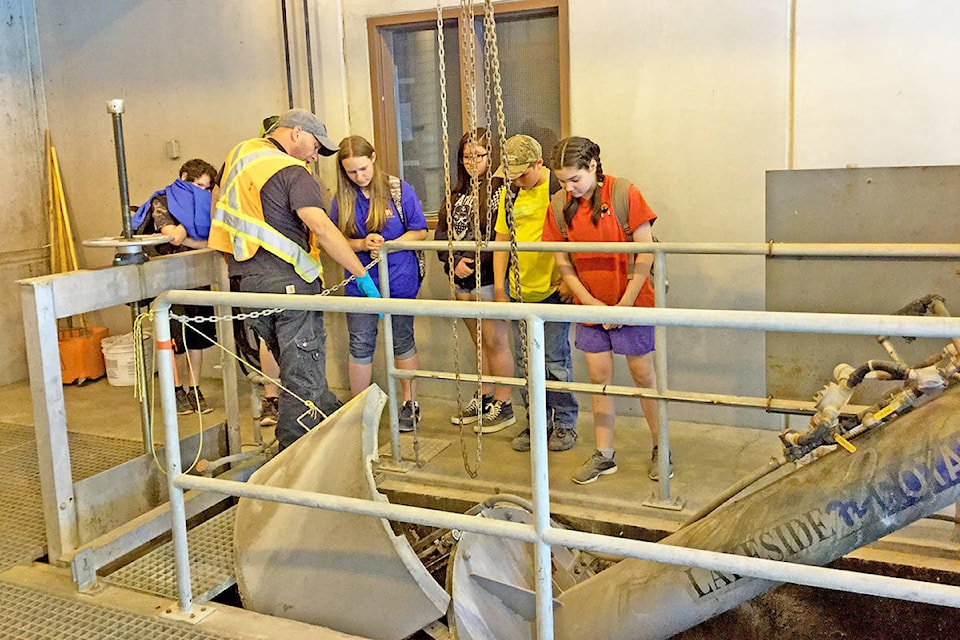Jenny Howell
Special to the Tribune/Advisor
Many of my days start by walking into a classroom. It could be any age of kids in front of me at any school. My job is to teach them about water and to preserve and protect the water supply we have.
Thousands of kids now have dressed up as H2Os, seen how an aquifer works, learned about five minute showers, and to put a pickle jar in their toilet tanks.
This time of year when I stand in front of kids, it’s to convince them they are about to have the best field trip ever. Well, OK, maybe not actually the best field trip ever, but one of the most important ones; we will shortly be heading to the sewage plant.
Our first stop is to the pump stations at Scout Island where City staff show students where water comes out of the aquifer that supplies the City. We see computer systems, pumps, and the chlorination system that all keep our City alive.
READ MORE: The small but mighty act of fixing things
Then we head to see the other end of things; what happens to our clean aquifer water once we have showered in it, flushed it and washed with it. The bus drops us at the top of the river valley and we have a chat about the storm sewer ponds we see below and then start the lovely walk along the river to the sewage lagoons. All is usually going well for a while; kids chatting to their friends, finding a snake or two, watching deer and eagles, identifying wildflowers; until we turn a corner and they start to wrinkle their noses. Soon the sewage buildings come into view and we see the full glory of the lagoons.
So this is where the field trip takes a turn for the worst (or best if you think of it as creating better world citizens). We walk between the lagoons with the bacteria popping away, digesting raw sewage. They see the pipe containing the whole City’s sewage discharging and the grit removal machine that has to remove all the garbage that comes down drains. They learn that only the three ‘Ps’ can be flushed down toilets (I’ll leave it to you work them out); not Q-tips, dental floss, cigarette butts, etc. We learn how the bacteria in the lagoons can only break down organic matter and this water is going to be discharged into the Fraser River, so to avoid putting chemicals such as paint and non-biodegradeable cleaners down drains since they will get into the river and then the ocean.
ALSO READ: Do you have household items in need of repair?
Last week, I walked into a class that had already done this trip the previous year. They were still excited to go, which even I questioned.
Honestly, their answer was that going to the sewage plant was fun.
Conservation Tip of the Month: Our drains connect to our rivers. Please do not flush old medications or send chemical products down drains.
The Cariboo Chilcotin Conservation Society’s Water Wise educators and support staff can be reached at 250-398-7929 or ccentre@ccconserv.org.
Jenny Howell is a Water Wise Instructor and Exeuctive Director with the Cariboo Chilcotin Conservation Society.
Do you have a comment about this story? email:
editor@wltribune.com
Like us on Facebook and follow us on Twitter.
